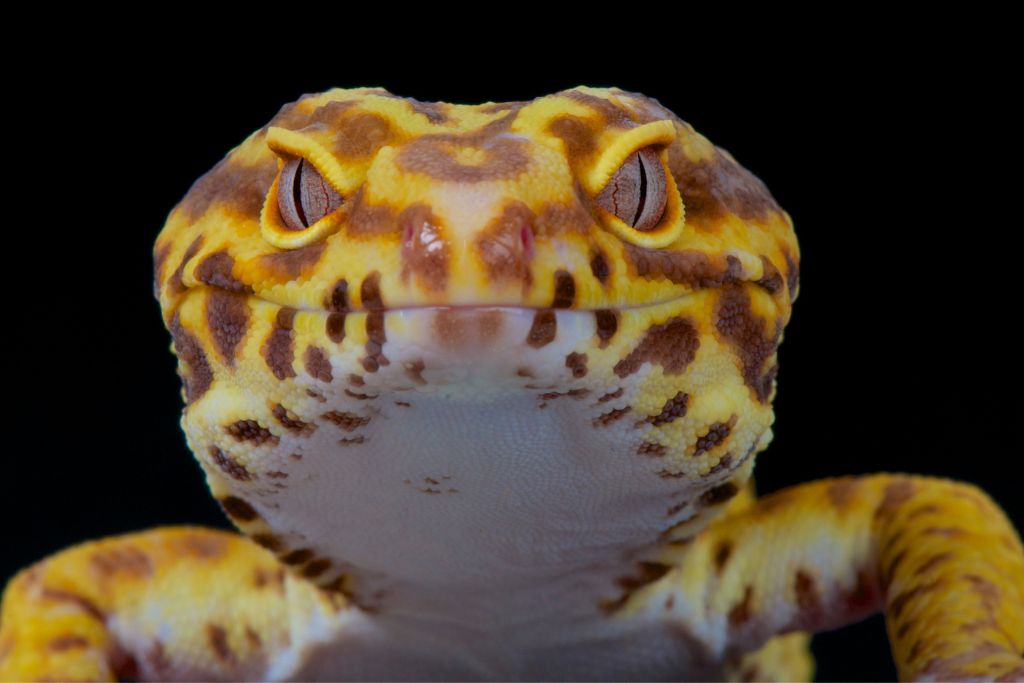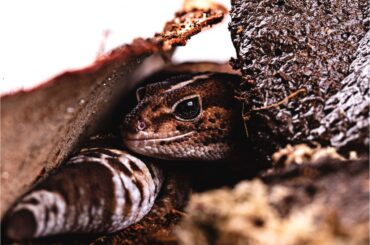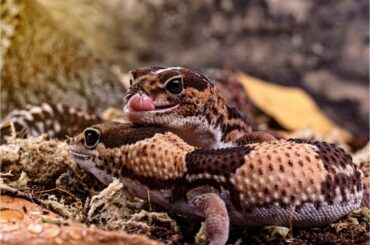Do leopard geckos pee? How do their urinary habits differ from other animals? What makes their excretory system so unique? These questions might have crossed your mind if you’re a curious pet owner or an animal enthusiast.
Leopard geckos are small, colorful reptiles that have captured the hearts of many. While they share similarities with other animals, their excretory system sets them apart.
Most animals, including humans, excrete liquid urine to eliminate waste. Leopard geckos, however, have a surprising twist to this tale.
Contrary to popular belief, these little reptiles don’t pee in the way we commonly understand. Instead of liquid urine, they excrete a semi-solid substance. This unique feature makes them easier to clean after and sparks curiosity about how nature works in mysterious ways.
The Physiology of Leopard Geckos
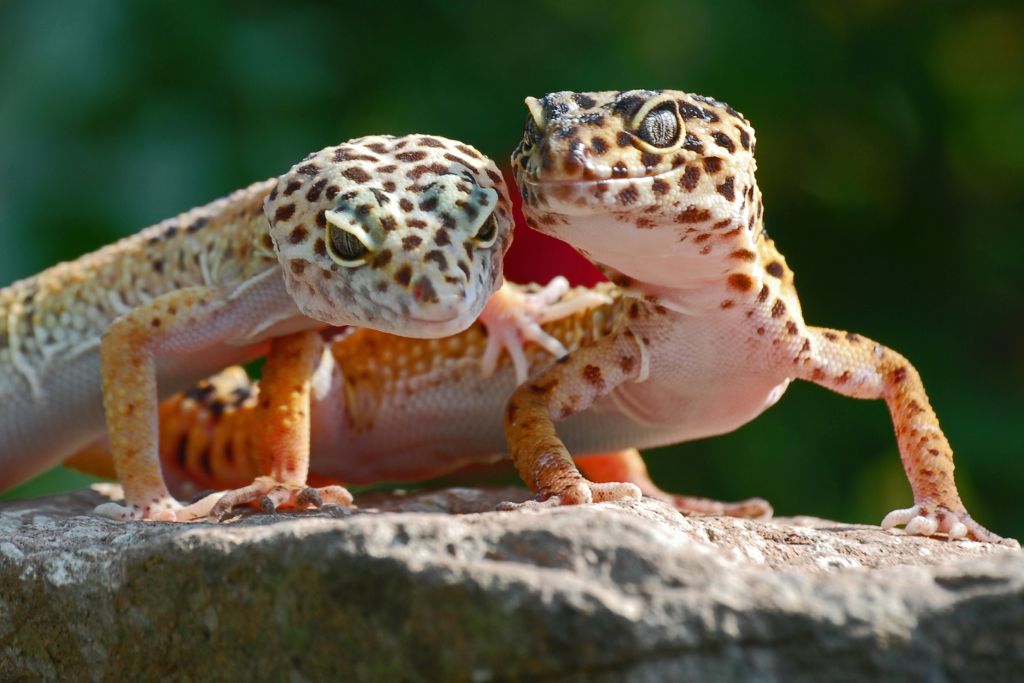
Leopard geckos hail from desert environments. These arid origins have shaped their unique physiology, making them experts at water conservation. Their skin is thick and tough, reducing water loss through evaporation.
Their kidneys play a vital role in keeping them hydrated. Unlike mammal kidneys that filter out waste and mix it with water to form urine, leopard gecko kidneys conserve water. They do this by reabsorbing it before waste leaves the body. This adaptation helps them thrive in places where water is scarce.
Do Leopard Geckos Urinate?
Many people think leopard geckos urinate like other animals. This belief is far from the truth. Instead of peeing liquid, they excrete a white, semi-solid substance called “urates.” Scientific studies confirm this unique behavior, which is an adaptation to their desert habitat.
They hold onto precious water by excreting waste, making them efficient survivors in harsh conditions.
Factors Affecting Leopard Gecko Urination Patterns
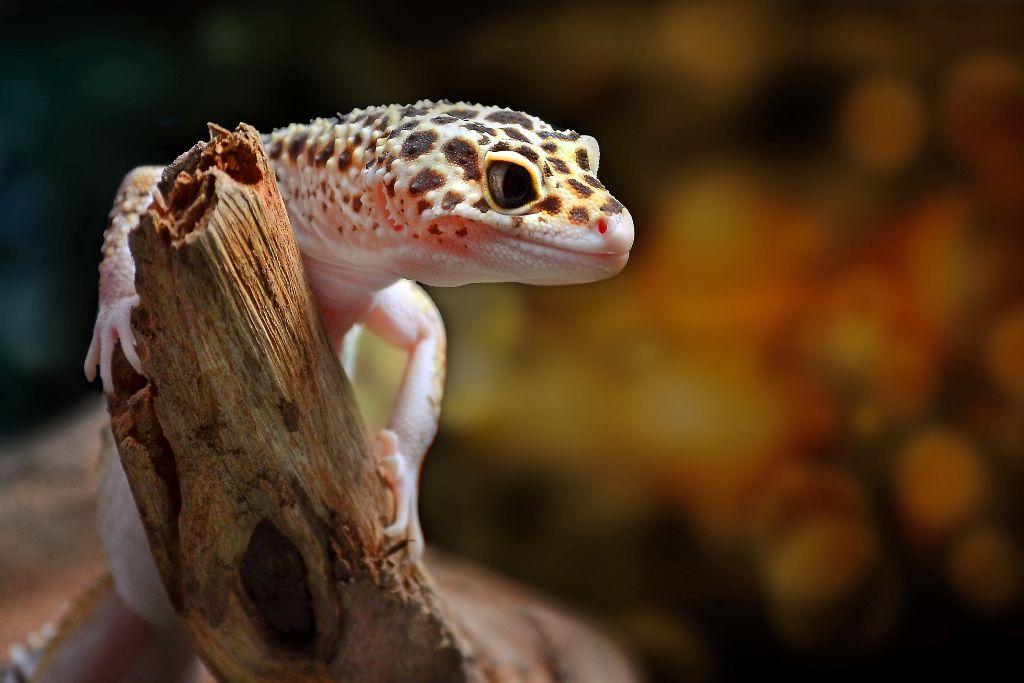
You might wonder: what influences how often a leopard gecko produces urates? It’s not just random; several factors come into play. Explore the factors affecting these unique urinary patterns.
- Diet: The type of food a leopard gecko eats can impact how often it produces urates. A balanced diet, rich in essential nutrients, helps regulate their system.
- Hydration: Access to clean water is crucial. Dehydration can lead to fewer urates, signaling a potential health issue.
- Temperature: Leopard geckos are cold-blooded. The temperature of their environment can affect their metabolic rate, which in turn influences urate production.
- Stress: Just like in humans, stress can mess with bodily functions. A stressed gecko might produce urates less frequently.
- Age: Younger geckos usually produce urates more often than their older counterparts. Their metabolism is generally faster, which leads to quicker waste production.
- Health Conditions: Certain illnesses can disrupt the typical pattern of urate production. If you notice any sudden changes, a vet visit is advisable.
- Activity Level: A more active gecko will likely produce urates more frequently. Exercise stimulates metabolism, which speeds up waste production.
Understanding Urates: What are They?
Urates are not your typical urine. Instead of liquid, they come out as a white, semi-solid substance. This unique form of waste is what you’ll find in a leopard gecko’s enclosure, not puddles of pee.
The urates look chalky and white because they’re mostly made of uric acid and other waste materials. Unlike liquid urine, which is mostly water, urates are concentrated. They contain the waste the gecko needs to eliminate without the extra water.
This method of waste removal serves a crucial purpose for leopard geckos – water conservation. Living in arid environments means every drop counts. These geckos hold onto more water by excreting urates, making them well-suited for life in the desert.
Pee vs. Urates
Among leopard gecko enthusiasts, a debate exists: can we call urates “pee?” Some argue that urates serve the same purpose as urine—getting rid of waste—so they should be considered a form of urination. Others disagree, pointing out the apparent differences in form and composition.
Experts and researchers weigh in on this debate by focusing on the function of urates. They point out that while urates and urine both serve to eliminate waste, the way they do so is different. Urine mixes waste with water, while urates keep water in the body and only get rid of the waste.
While the debate may continue, one thing is clear: urates are a fascinating adaptation that allows leopard geckos to thrive in their natural habitat. Whether or not you choose to call it “peeing,” this unique method of waste removal is a testament to the gecko’s incredible ability to adapt and survive.
Observing Your Leopard Gecko’s Bathroom Habits
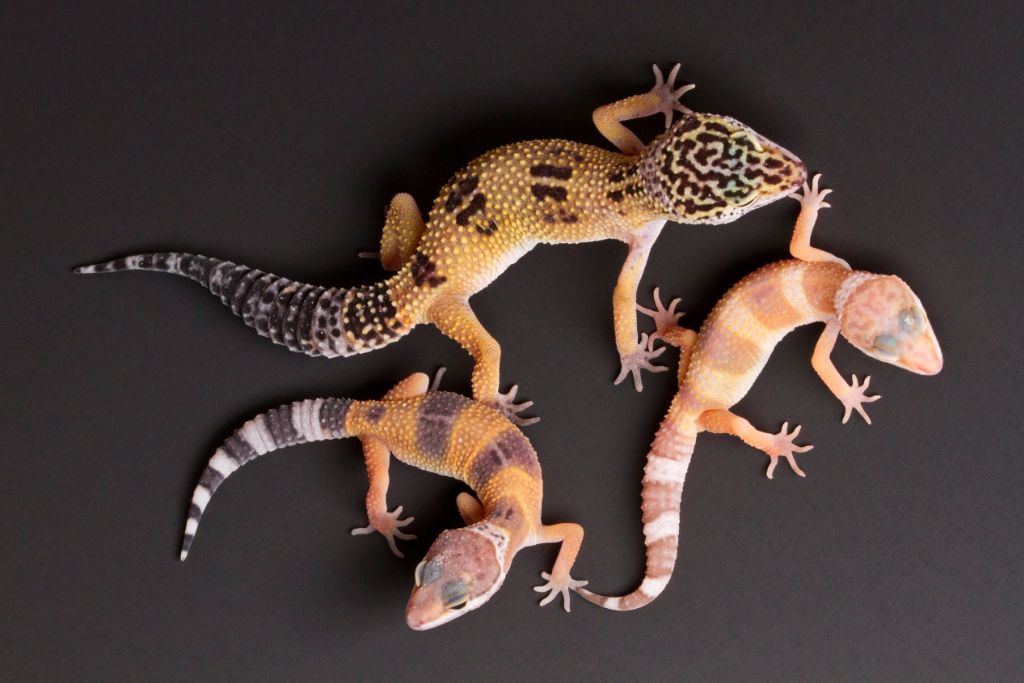
Keeping an eye on your leopard gecko’s bathroom habits can tell you much about its health. It’s not just about cleaning up; it’s also about understanding your pet better. Here are some tips to help you monitor these unique behaviors effectively.
- Regular Checks: Make it a habit to inspect the enclosure daily. Look for urates and note their appearance. Changes could signal health issues.
- Log Observations: Keep a record of when your gecko produces urates. Tracking frequency can help you spot irregularities early on.
- Clean Water Supply: Always ensure your gecko has access to fresh water. Proper hydration affects urate production.
- Temperature Control: Maintain a consistent temperature in the enclosure. Fluctuations can mess with your gecko’s metabolism and urate production.
- Stress-Free Environment: Minimize stress by providing hiding spots and avoiding sudden changes in the habitat. Stress can alter bathroom habits.
- Consult a Vet: If you notice drastic changes in urate production or appearance, consult a vet. Early intervention can prevent serious health issues.
A well-maintained habitat encourages natural behaviors, including healthy urate production. By paying attention to these details, you’re not just being a responsible pet owner but also getting to know your leopard gecko better.
Common Bathroom Behavior Concerns
Pet owners often have questions and concerns about their leopard gecko’s bathroom habits. Is my gecko producing urates too often or not enough? Assess some typical concerns and their implications.
- Frequent Urate Production: If your gecko produces urates more often than usual, it could be due to a high metabolic rate. Consult a vet to rule out any health issues if this persists.
- Rare Urate Production: Less frequent urate production might indicate dehydration or low metabolic activity. Ensure your gecko has access to fresh water and a properly heated habitat.
- Change in Urate Color: A change in the color of the urates can be a red flag. Darker urates may indicate dehydration, while other color changes could signal health issues.
- Soft or Runny Urates: This could be a sign of digestive issues or an imbalanced diet. Consult a vet for proper diagnosis and treatment.
- Straining or Difficulty: If your gecko seems to struggle while producing urates, this could indicate a blockage or other health concerns that require immediate veterinary attention.
- Odor: A robust and foul smell from the urates is abnormal and could indicate an infection or other health issues.
Tips for Promoting Healthy Urination
Ensuring your leopard gecko has healthy urination habits is vital to its overall well-being. From diet to habitat, several factors contribute to urinary health. Keep your pet healthy with these simple tips.
- Balanced Diet: Offer a variety of insects, like crickets, mealworms, and roaches. A balanced diet ensures your gecko gets all the nutrients it needs, promoting healthy urate production.
- Fresh Water: Keep a shallow dish of fresh water in the enclosure. Proper hydration is crucial for normal urate production and overall health.
- Temperature Control: Use a heat lamp or under-tank heater to maintain a consistent temperature. A stable environment helps regulate your gecko’s metabolism and urate production.
- Regular Cleaning: Keep the enclosure clean to prevent bacterial growth. A dirty habitat can lead to infections that affect urination.
- Stress Management: Provide hiding spots and climbing structures to reduce stress. A comfortable gecko is a healthy gecko.
- Regular Vet Visits: Schedule regular check-ups with a vet experienced in reptile care. Preventive care can catch potential issues before they become serious problems.
Conclusion
Understanding your leopard gecko’s unique urinary habits is crucial for its well-being. These fascinating reptiles have adapted to their natural environment in extraordinary ways, including how they handle waste. As responsible pet owners, we must respect these natural behaviors and provide a habitat that allows them to thrive.
FAQs
Do Leopard Geckos Pee Liquid?
No, they excrete a white, semi-solid substance called urates.
How Often Do Leopard Geckos Poop or Pee?
It varies, but generally, younger geckos do it more often. Keep an eye out for changes, as they can signal health issues.
Is There a Difference Between Urination and Defecation in Leopard Geckos?
Yes, there is a significant difference. Urination involves the excretion of a white, chalky substance called urates, along with a small amount of liquid. Defecation, however, involves the release of brown, semi-solid feces.

